How to Attract More Moths to Your Garden With Light
Updated: Sep. 02, 2022
Gather some lights, bring some bananas and a bedsheet, and learn how to attract moths for a whole lot of late-night backyard fun!
How to Attract Moths
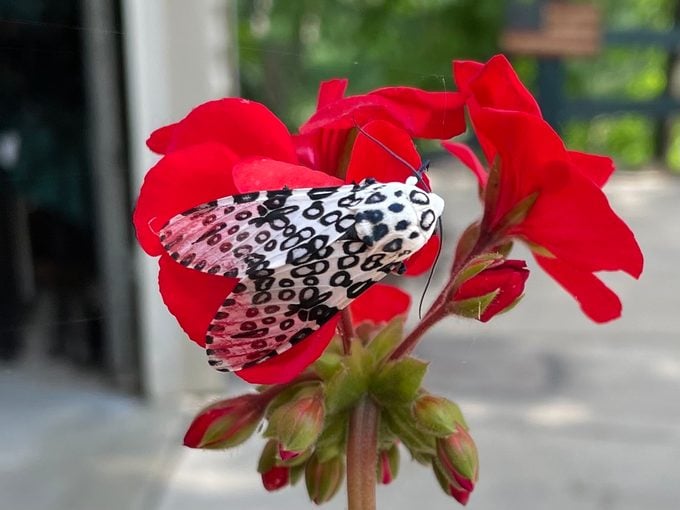
We all love the way butterflies lure us into the garden by day, but the magic doesn’t have to end when the sun goes down. Along with butterflies, moths belong to the order Lepidoptera. When the light leaves the sky and the butterflies go to sleep, the late-night lepidoptera come out to play! The popularity of moth watching is growing, and with good reason. If you still think of moths as drab little things that eat your sweaters, their beauty and diversity will amaze you. Follow the tips below to learn how to attract moths.
With 11,000 species in the U.S. and Canada (compared with only about 700 species of butterflies), moths are everywhere. They also come in a dizzying array of sizes and patterns, in colors ranging from subtle to dazzling. Once you start paying attention, you’ll see why moth watching is an endless source of learning and fun.
Meet the colorful moths you can see during daytime.
Why Are Moths Attracted to Light?
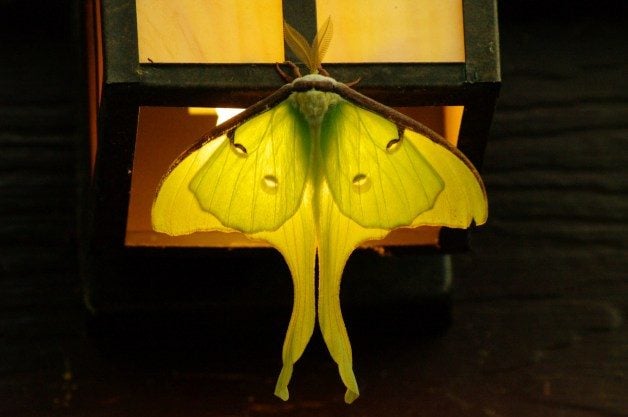
Simply leaving your porch light on will attract moths, but you can increase your chances of finding impressive ones by following some simple tips. We started “mothing” together a few years ago, and it was so much fun that we decided to share the excitement with our friends. In recent years we’ve been hosting moth parties! Here are some pointers.
Although the precise reason remains uncertain, most moths are attracted to artificial lights. Serious moth watchers sometimes use very elaborate setups, even taking generators way out into the woods, but you don’t have to go to such lengths.
At our house, the porch light isn’t in the best position for visibility, so we run an extension cord out into the backyard and hang a couple of lights on an old camera tripod. One is a bright white light; the other is a black (ultraviolet) light that emits a pale blue glow. You can find inexpensive black lights at hardware stores or party-supply stores. Some moths are more attracted to black lights than to standard ones. Using both kinds can dramatically increase the number and the diversity of moths you’ll see.
Next, we hang a plain white sheet right behind the black light. The cheapest quality will do. The sheet is there for the moths to land on and to make it easier for you to see and photograph them. You can hang the sheet from a clothesline or a rope tied between two trees, or tack it to the side of a building. It’s also a good idea to put another white sheet on the ground under the lights, so you can see underfoot and avoid stepping on any moths.
These pictures will change the way you look at moths.
How to Make Moth Bait
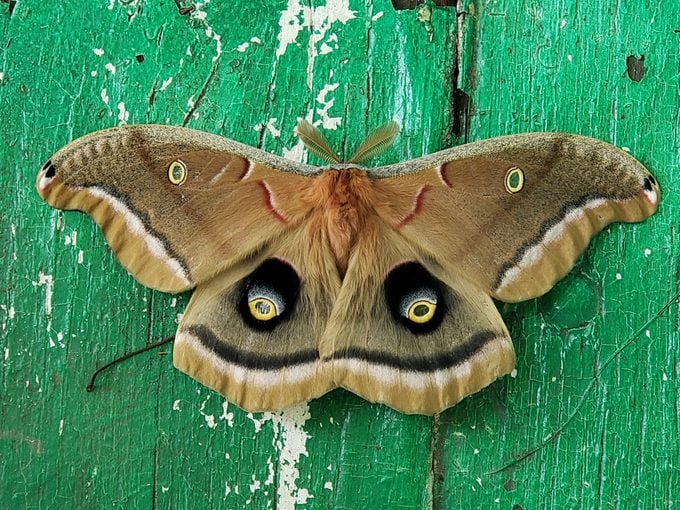
Some moths aren’t particularly attracted to lights. Fortunately, there’s another lure you can use: bait! Here’s the simple recipe that works best for us. In a large wide-mouthed container, mix five or six really overripe bananas (so far gone that the peels are black), 2 pounds of brown sugar and 20 ounces of cheap beer. Stir the mixture until it’s well-blended. The bait works best if you let it ferment for a few days before using it, but you don’t have to.
To use, take a wide paintbrush and simply spread the mixture onto the bark of a tree—or several trees—at eye level. A spot about a foot square should do. Moths will detect the scent of the bait and come to feast on your sugary offering. Using a flashlight, check the bait as often as you like to see who’s coming by. If you watch closely, you may be able to see a moth’s long, slender, tonguelike proboscis as it sips the bait.
Don’t overlook the lovely luna moth.
Other Backyard Bugs to Attract
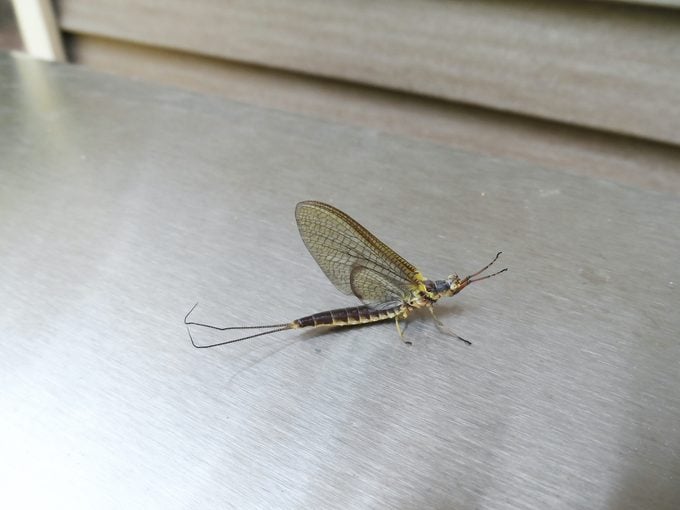
Many other insects—colorful little beetles at the bait, dainty mayflies at the lights—may be attracted to your moth offerings, too. All are fascinating to watch. Just keep an open mind and enjoy your discoveries.
Lights, sheets and bait are essential, but don’t forget your human guests. Learning how to attract moths on your own is fun and interesting, but you’ll amplify the excitement when friends and family members share the experience. Moths are captivating to children in particular. What kid wouldn’t love playing outside after dark with flashlights and staying up past their bedtime?
It’s a marvelous thing when you discover that adventures in nature can happen under the stars as well as in sunlight. We hope you’ll host your own moth party and explore the late-night lepidoptera in your yard!
Meet the milkweed tussock moth and caterpillar.
Common Moths You Should Know
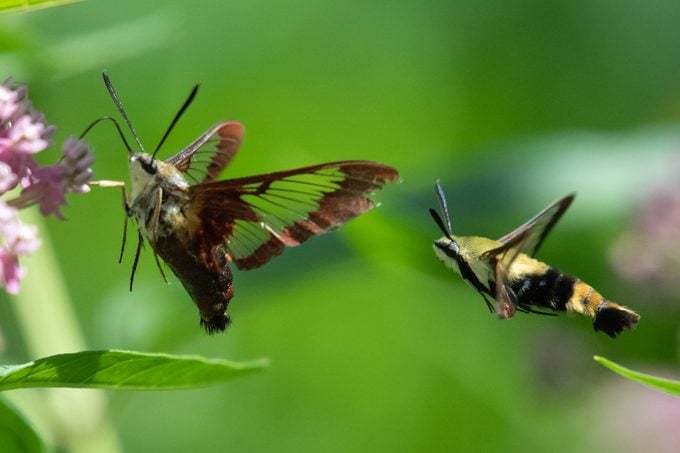
Identifying all 11,000 species of North American moths would be a monumental challenge, but some basic groups are easy to recognize.
- Silk moths: This group includes our largest moths, such as the beautiful pale green luna and the huge polyphemus. Adults live for only a few days and, remarkably, do not feed at all, so you may attract them with lights but not bait.
- Sphinx moths: These strong, fast fliers can be seen hovering at flowers the way hummingbirds do. At rest, these “hummingbird moths” look like little fighter jets poised for takeoff.
- Geometer moths: Appearing in all colors and patterns, they usually rest with their wings stretched straight out to the side. They often have stripes that continue across all four wings. Their caterpillars are the little inchworms we see looping their way across leaves and twigs.
- Underwing moths: Members of this group are often much more attracted to bait than to lights. Their forewings are dull and camouflaged. But their hindwings have bright, colorful patterns.
Next, learn fascinating facts about cecropia moths.
